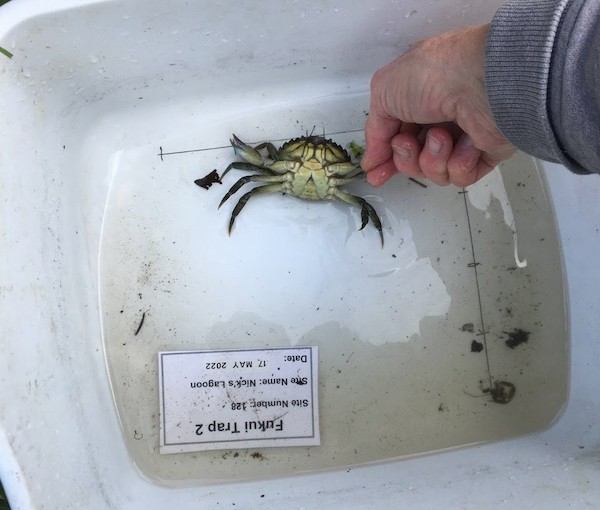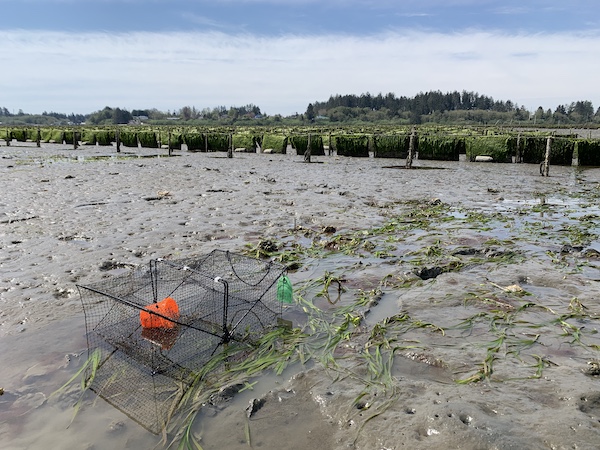
Invasive Crab Found In Hood Canal, Furthest South Sound Discovery
An invasive European green crab has been found in central Hood Canal, the first discovery in the fjord and the furthest south in Washington’s inland seas the species has been found so far.

The small male was spotted by Washington Sea Grant volunteers in Nick’s Lagoon by Seabeck, southwest of the Bangor submarine base.
Even as it is decidedly bad news and follows on infestations at the Lummi Sea Pond, Dungeness Spit and the North Coast, WDFW spokesman Chase Gunnell said this shows improved and better funded efforts to get ahead of the problem are working.
WDFW has deployed traps in the area as part of a rapid response to “understand the scope of green crab presence and attempt to locally eradicate green crabs before they can take hold.”
Plans call for crews to scale up trapping in the area and identify new areas to target.
The public is asked not to tamper with the modified shrimp pots, which are deployed in shallow tide flats and carry a bright orange buoy and a tag.

Gunnell reports that WDFW over the last few weeks has set 700-plus traps in Lummi and Willapa Bays.
European green crabs gained a foothold in Maine and the Canadian Maritime provinces in the 1800s and were first recorded in Washington’s Willapa Bay and Grays Harbor in 1998, then Sooke, on the Vancouver Island side of the Strait of Juan de Fuca, in 2012.
Since then they’ve been found in Westcott, Padilla, Sequim, Samish, Lummi and Makah Bays, and Drayton and Squalicum Harbors.
They are described by Washington Sea Grant as “an able colonizer and efficient predator” that “has the potential to significantly alter any ecosystem it invades. It has been blamed for the collapse of the soft-shell clam industry in Maine. The green crab could threaten Dungeness crab, oyster, and clam fisheries and aquaculture operations in the Pacific Northwest and British Columbia.”
WDFW encourages those who believe they have found a green crab or its shell to take photos and report it online asap. The agency discourages destroying the shellfish given the possibility of actually killing a native crab.

ODFW recently boosted the daily limit to 35 “to encourage greater harvest.”
